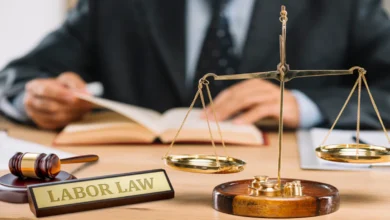10 Important Differences: Bankruptcy vs Insolvency

Bankruptcy vs Insolvency, Bankruptcy, and insolvency are two terms that are often used interchangeably, but they actually have different meanings and implications. Bankruptcy is a legal process that allows individuals or businesses to eliminate or restructure their debt, while insolvency refers to a financial condition where an individual or business is unable to pay their debts as they become due. Understanding the differences between these two terms is crucial for anyone dealing with financial difficulties. In this article, we will explore 10 important differences between bankruptcy and insolvency.
When an individual or business is facing financial difficulties, it is important to understand the options available to them. Two of the most common terms used in these situations are bankruptcy and insolvency. While these terms are often used interchangeably, they have distinct meanings and implications.
In this article, we will explore the differences between bankruptcy and insolvency, including the legal processes involved, the impact on credit scores and future financial options, and more.
Read More: Laws Regarding Bankruptcy in California: 5 Best Guide
Definition of bankruptcy
Bankruptcy is a legal process that allows individuals or businesses to eliminate or restructure their debt. When someone files for bankruptcy, they are essentially saying that they cannot pay their debts as they become due. The bankruptcy process is designed to provide relief for people in this situation by allowing them to discharge some or all of their debts.
There are two main types of bankruptcy for individuals: Chapter 7 and Chapter 13. Chapter 7 bankruptcy is also known as liquidation bankruptcy because the debtor’s non-exempt assets are sold to pay off their debts. Chapter 13 bankruptcy, on the other hand, allows debtors to keep their assets while they make payments on their debts over a period of three to five years.

Definition of insolvency
Bankruptcy vs Insolvency, Insolvency, on the other hand, refers to a financial condition where an individual or business is unable to pay their debts as they become due. Insolvency can occur for a variety of reasons, including poor financial management, economic downturns, or unexpected expenses.
While bankruptcy is a legal process, insolvency is a financial condition. Insolvent individuals or businesses may still be able to negotiate with creditors to work out a payment plan or other arrangement to avoid bankruptcy.
Bankruptcy and insolvency laws
Bankruptcy vs Insolvency, Both bankruptcy and insolvency are regulated by federal and state laws. Bankruptcy laws are designed to provide a framework for individuals or businesses to eliminate or restructure their debts, while insolvency laws are designed to protect the rights of creditors and ensure that debts are paid as much as possible.
Types of bankruptcy
Bankruptcy vs Insolvency, As mentioned earlier, there are two main types of bankruptcy for individuals: Chapter 7 and Chapter 13. There are also other types of bankruptcy, including Chapter 11 bankruptcy for businesses and Chapter 12 bankruptcy for farmers and fishermen.
Bankruptcy vs Insolvency, Types of insolvency
Bankruptcy vs Insolvency, There are two types of insolvency: cash flow insolvency and balance sheet insolvency. Cash flow insolvency occurs when an individual or business is unable to pay their debts as they become due. Balance sheet insolvency occurs when an individual or business has more liabilities than assets.
Automatic stay vs. voluntary arrangement
Bankruptcy vs Insolvency, When someone files for bankruptcy, an automatic stay goes into effect. This means that creditors are prohibited from taking any collection actions against the debtor, including phone calls, letters, or lawsuits. The automatic stay provides debtors with immediate relief from creditor harassment and gives them time to reorganize their finances.
In contrast, a voluntary arrangement is a negotiation between the debtor and their creditors. The debtor proposes a repayment plan, and if the creditors agree, the debtor can avoid bankruptcy. A voluntary arrangement does not have the same legal protections as bankruptcy, and creditors are not required to agree to the repayment plan.
Role of the trustee vs. administrator
Bankruptcy vs Insolvency, In bankruptcy, a trustee is appointed to oversee the debtor’s case. The trustee is responsible for selling the debtor’s non-exempt assets and distributing the proceeds to the creditors. The trustee also has the power to investigate the debtor’s financial affairs and object to the discharge of certain debts.
In insolvency, an administrator may be appointed to oversee the debtor’s affairs, but this is not always the case. The role of the administrator is to work with the debtor and their creditors to develop a plan to repay the debts.
Effect on credit score
Bankruptcy vs Insolvency, Both bankruptcy and insolvency can have a negative impact on a person’s credit score. Bankruptcy will remain on a person’s credit report for up to 10 years, while insolvency will remain on the report for up to six years.
However, it is possible to rebuild credit after bankruptcy or insolvency. By making timely payments on new debts and managing credit responsibly, individuals can improve their credit score over time.

Effect on future financial options
Bankruptcy vs Insolvency, Bankruptcy and insolvency can also have an impact on a person’s future financial options. For example, it may be more difficult to obtain credit or loans in the future, and interest rates may be higher.
However, it is still possible to obtain credit and loans after bankruptcy or insolvency. It may take some time and effort, but with responsible financial management, individuals can improve their financial situation over time.
Bankruptcy vs Insolvency, Conclusion
Bankruptcy and insolvency are two terms that are often used interchangeably, but they have different meanings and implications. Bankruptcy is a legal process that allows individuals or businesses to eliminate or restructure their debt, while insolvency refers to a financial condition where a person or business is unable to pay their debts as they become due.
Understanding the differences between bankruptcy and insolvency is important for anyone facing financial difficulties. Both bankruptcy and insolvency have legal and financial implications that can impact a person’s future financial options. However, with responsible financial management, it is possible to overcome the challenges and rebuild credit over time.
Read More: 10 Best Law Firms in Florida 2023
FAQs
Can I file for bankruptcy or insolvency more than once?
What debts can be discharged in bankruptcy?
Will bankruptcy or insolvency stop foreclosure proceedings?
Can creditors garnish my wages after I file for bankruptcy?
Can I keep my house and car if I file for bankruptcy?










